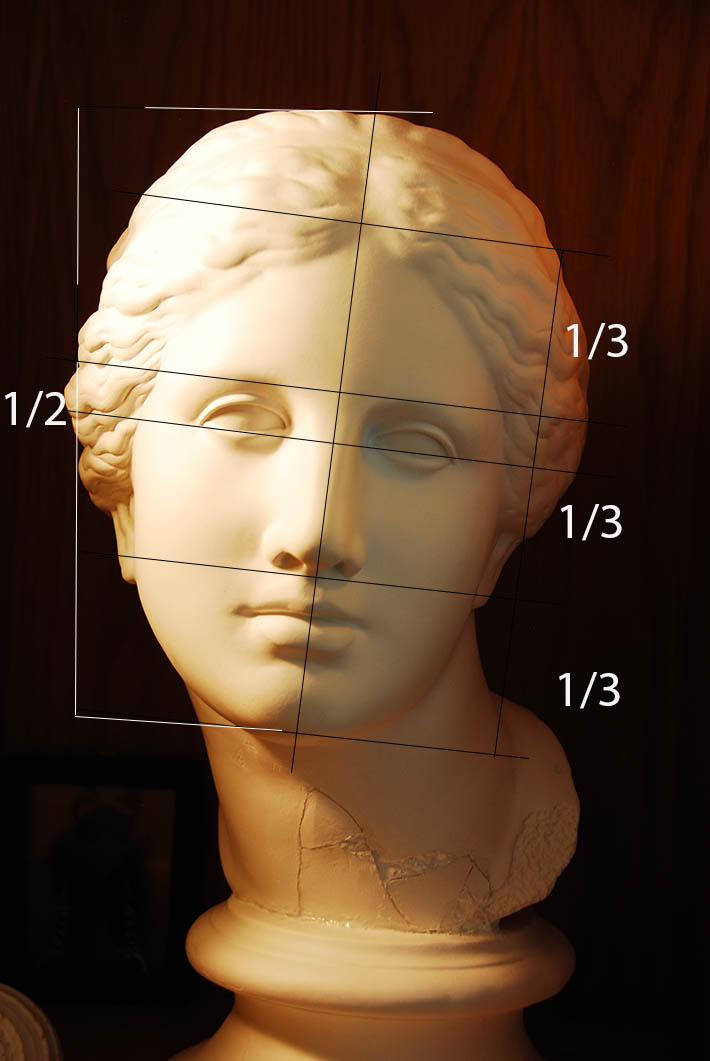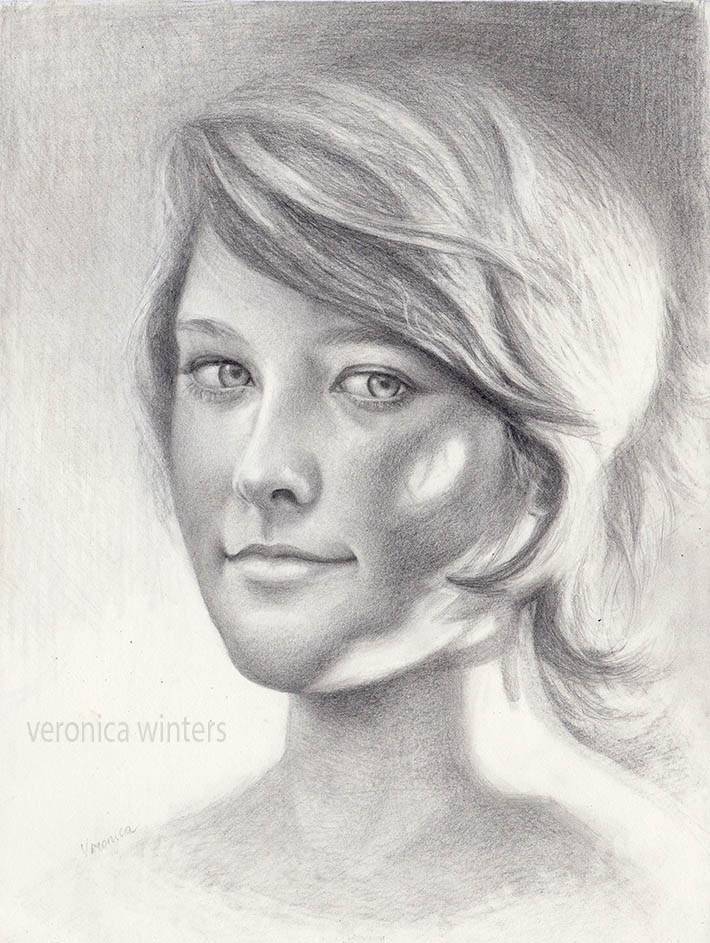To draw a female face correctly, an artist must consider several elements, including the head’s rotation, gesture and the placement facial features. Let’s look at the classical plaster cast of Aphrodite to study the basic proportions of a female face and for drawing practice. Although all people look unique, classical proportions apply to any realistic drawing, as it serves as a basis for understanding how to draw a female face.

Plaster casts are invaluable to understanding the human form mainly because real-life women conform to the same proportions and principles. As you transition from casts to models, the process becomes easier. A model’s likeness is achieved through careful observation and adjustment of the classical features the artist gets used to drawing. For example, a model’s eyes may be narrower and smaller, or her mouth may be fuller or thinner. Sketching from life is the most beneficial practice for the artist, but starting with a still life cast is a great starting point.
Classical female face
The face can be divided into three equal parts:
- From the hairline to the eyebrows
- From the eyebrows to the bottom of the nose
- From the nose to the bottom of the chin
Once you’ve divided the head into these sections, you can easily place the features:
- The eyes are halfway between the top of the head and the bottom of the chin. The distance between the eyes is the same width as one eye.
- The ears are about the same size as the distance between the eyebrows and the bottom of the nose. Its visual location depends on the head’s rotation.
- The central line not only divides the face for easy alignment of the features but also gives the correct rotation and gesture (position) of the head.
Looking for more tips for drawing faces and heads? This blog post will help!
Sketching a female face
To begin, mark the top and bottom of the subject’s head to “lock” it on a page. As you draw, don’t go beyond these marks; instead, figure out the proportions within those marks. This classical approach to drawing helps you keep the subject on the page without letting it slide down, get cropped or not fit in by accident. This lay in with markings is called the “envelope.”
Then, draw the center line to mark and show the face’s rotation in space. Sketch several horizontal parallel lines following the proportions described above and mark the general placement of facial features.

The distribution of light on a female face
After the general layout of features is complete, begin shading. Shading happens in accordance with the distribution of light you see in the picture below. Every face is a topographical landscape of lights and darks, rather than lines and particular features.

The highlight is the lightest light in the picture. The middle tone is the middle value falling between the lights and the darks. The cast shadow is a shadow created by the object (or in the case of a face, the head or individual features). Reflected light is a light on the object that bounces of the surroundings.
For more on drawing shadows and understanding light, check out this blog post.
This is an example of a female face drawn in graphite observing the distribution of light.

The differences between male and female face
Although every face has a unique shape, regardless of gender, there are several considerable comon visual differences between typical male and female faces, such as:
- Men have larger faces with chiseled jawlines, square-like heads and sharp angles. Women, on the other hand, are more round. The female skull is narrower and oval-like at the top, creating a softly curved hairline.
- Female faces have longer, thicker upper eyelashes (often due to mascara), as well as thinner, more elegant eyebrows. They also have curvier eyes, round cheeks and narrower, thinner noses and necks.
- The shape of a mouth can also be telling: female lips are more feminine with a fuller upper lip and curvier indent above the upper lip.
- Facial hair also creates one of the major differences between the sexes. Even the shaven male face shows a faint gray line marking around the beard.
- When it comes to shading and the distribution of light, the female face has softer edges and rounder shapes.

Share tips, start a discussion or ask one of our experts or other students a question.
No Responses to “Feminine Features Made Easy: How to Draw A Female Face”